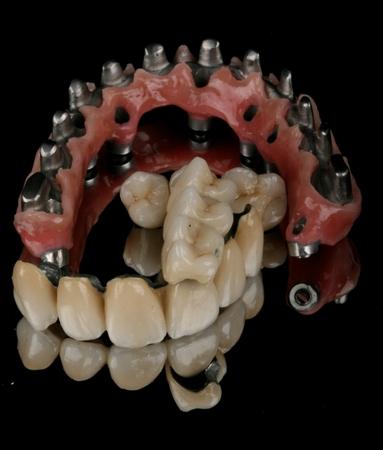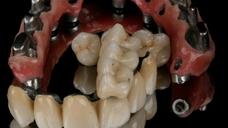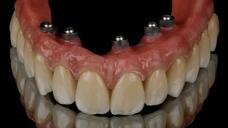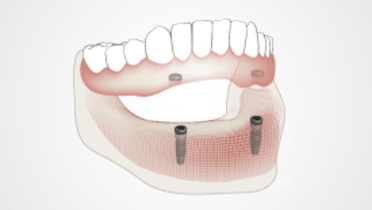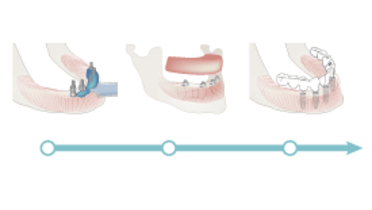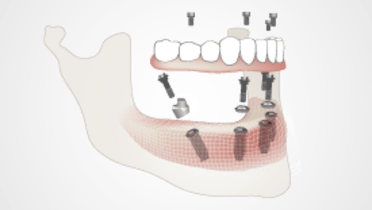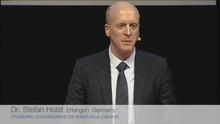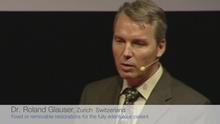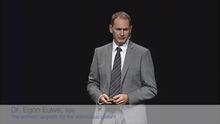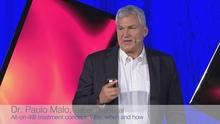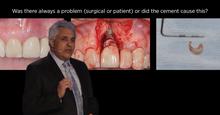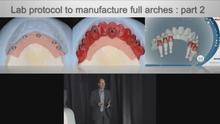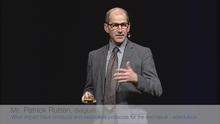-
0
Patient Assessment
- 0.1 Patient demand
- 0.2 Overarching considerations
- 0.3 Local history
- 0.4 Anatomical location
- 0.5 General patient history
-
0.6
Risk assessment & special high risk categories
- 5.1 Risk assessment & special high risk categories
- 5.2 age
- 5.3 Compliance
- 5.4 Smoking
- 5.5 Drug abuse
- 5.6 Recreational drugs and alcohol abuse
- 5.7 Parafunctions
- 5.8 Diabetes
- 5.9 Osteoporosis
- 5.10 Coagulation disorders and anticoagulant therapy
- 5.11 Steroids
- 5.12 Bisphosphonates
- 5.13 BRONJ / ARONJ
- 5.14 Radiotherapy
- 5.15 Risk factors
-
1
Diagnostics
-
1.1
Clinical Assessment
- 0.1 Lip line
- 0.2 Mouth opening
- 0.3 Vertical dimension
- 0.4 Maxillo-mandibular relationship
- 0.5 TMD
- 0.6 Existing prosthesis
- 0.7 Muco-gingival junction
- 0.8 Hyposalivation and Xerostomia
- 1.2 Clinical findings
-
1.3
Clinical diagnostic assessments
- 2.1 Microbiology
- 2.2 Salivary output
-
1.4
Diagnostic imaging
- 3.1 Imaging overview
- 3.2 Intraoral radiographs
- 3.3 Panoramic
- 3.4 CBCT
- 3.5 CT
- 1.5 Diagnostic prosthodontic guides
-
1.1
Clinical Assessment
-
2
Treatment Options
- 2.1 Mucosally-supported
-
2.2
Implant-retained/supported, general
- 1.1 Prosthodontic options overview
- 1.2 Number of implants maxilla and mandible
- 1.3 Time to function
- 1.4 Submerged or non-submerged
- 1.5 Soft tissue management
- 1.6 Hard tissue management, mandible
- 1.7 Hard tissue management, maxilla
- 1.8 Need for grafting
- 1.9 Healed vs fresh extraction socket
- 1.10 Digital treatment planning protocols
- 2.3 Implant prosthetics - removable
-
2.4
Implant prosthetics - fixed
- 2.5 Comprehensive treatment concepts
-
3
Treatment Procedures
-
3.1
Surgical
-
3.2
Removable prosthetics
-
3.3
Fixed prosthetics
-
3.1
Surgical
- 4 Aftercare
Fixed implant prostheses, introduction
Key points
- Fixed implant prostheses offer high predictability and patient satisfaction
- Fixed implant prostheses are reported to offer higher patient satisfaction and quality of life when compared to other treatment options
- The distance available between the anterior and posterior implants determines a prosthesis' cantilever length
- Screw-retained designs offer biological and maintenance advantages in comparison to cement-retained solutions
Advantages of fixed implant prostheses
A fixed prosthesis offers benefits from both a functional and esthetic point of view and may be regarded as quite similar to a patient's own natural dentition when compared to alternative treatment options such as complete dentures or implant overdentures. There is a significantly reduced bulk to a fixed prosthesis which is perceived to be more comfortable and since no mucosal support is needed, patients can chew with greater force and eat a wider range of foods. Fixed prostheses lead to a gain of posterior mandibular bone because of the adaptation to higher chewing forces whereas hinging overdentures lead to bone loss in the posterior regions. Patients report enhanced social confidence as a result and reported quality of life satisfaction scores are highest with a fixed implant prosthesis. With all fixed prostheses, the contour should be carefully shaped in order to allow for oral hygiene access as these prostheses cannot be removed by the patient for cleaning. When a fixed prosthesis is close to the oral mucosa, the prosthesis' surface should be smooth and highly polished.
Metal-acrylic resin prostheses
This prosthesis type shows excellent clinical long-term results and until recently it has been the primary type of fixed implant prosthesis provided to patients. A metal framework is fabricated which attaches to the implants and which has been designed to incorporate mechanical elements to help retain acrylic resin and artificial denture teeth. The current technology also uses CAD/CAM to fabricate precision-fit frameworks. The final prosthesis is usually screw-retained and is relatively easy to retrieve if denture teeth or acrylic resin need to be repaired.
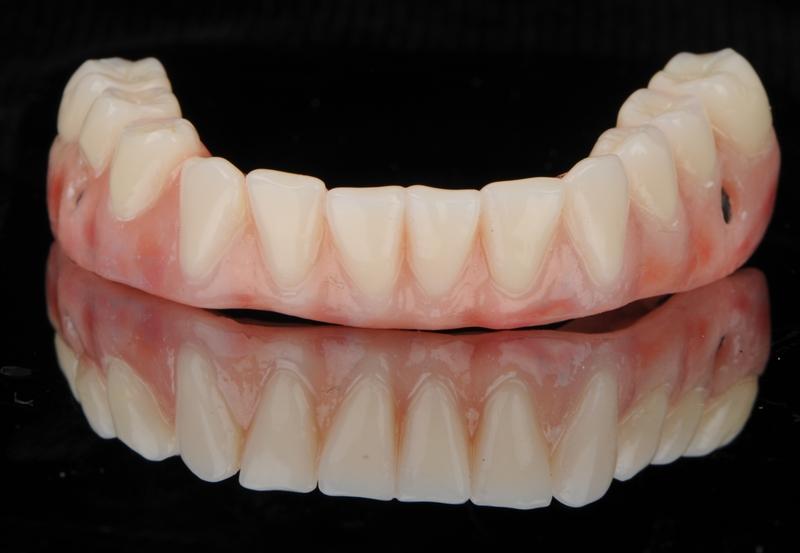
Metal-ceramic prostheses
These prostheses simulate a typical ceramo-metal bridge made for natural teeth in the sense that a substructure is fabricated to provide both the attachment to underlying implants as well as an ideal porcelain thickness for long term durability. A full-contour wax-up of the framework is done. It is then cut back to create the ideal veneering ceramic thickness and then it is scanned. The scanned image is employed in a CAM process to create a metal framework from a ceramic compatible alloy. In some situations, the wax up may be cast in a ceramo-metal alloy but full-arch precision of fit is more difficult to obtain than with a CAM substructure.
A metal-ceramic prosthesis shows very good esthetics, as ceramic is more life-like than acrylic resin. One disadvantage of a metal-ceramic prosthesis is that ceramic chipping or fracture may occur and may be difficult to repair. The opposing occlusion should be invariably and scrupulously considered, especially if a parafunctional habit is suspected. If indicated, consider prescribing an occlusal guard for adjunctive protection of the applied dental materials.
All-Ceramic Prostheses
This type of prosthesis is conceptually similar to the metal-ceramic prosthesis, except the substructure is made from ceramic (zirconia) instead of metal. Veneering ceramic is then applied to the zirconia. Patients who request a metal-free prosthesis and/or demand an excellent esthetic outcome may be better managed with an all-ceramic prosthesis in which the gray color of metal-ceramic does not need to be masked. Here too, ceramic chipping or fracture may be difficult to repair, and occlusal considerations, particularly parafunctional ones, need to be very carefully considered.
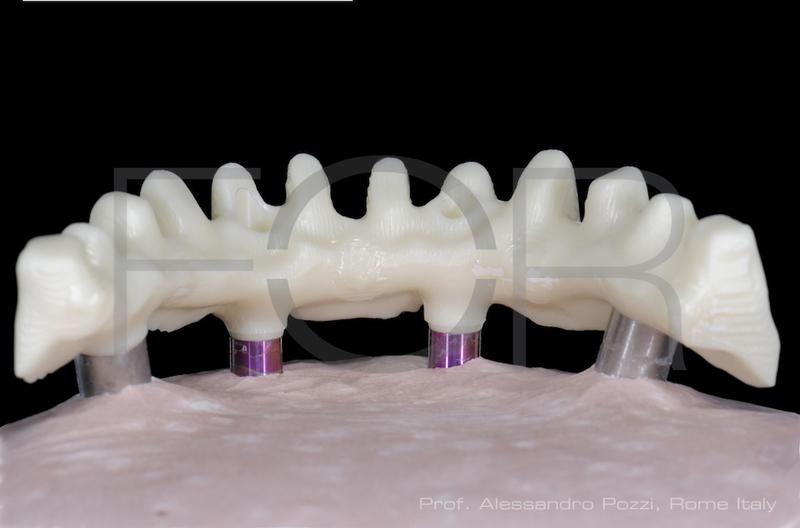
Screw-retained versus cemented fixed implant prostheses
Both types of prosthesis retention can give excellent long-term results, although the retrievability afforded by screw-retained prostheses clearly offers the safer and most versatile option. Nonetheless some dentists prefer the cementation protocol since this approach precludes visibility of access openings in the occlusal or facial surfaces of the artificial teeth. It should however be emphasized that any sub-mucosal extension of a prosthesis could predispose to an iatrogenic peri-implant inflammation with attendant marginal bone loss if all cement remnants are not removed. For full-arch prostheses a screw-retained design is recommended as any maintenance procedure or subsequent treatment can be performed more efficiently by removing the prosthesis; for example in the case of technical problems such as fracture of the veneering material or of abutment screws or treatment of mucositis and periimplantitis. The problem of screw access openings being located in esthetically relevant areas can be solved by using angulated abutments (i.e. Multi-unit abutments) or angulated screws channels.
Esthetic and phonetic considerations
Esthetic demands of the patient have to be discussed in advance of the treatment very carefully. Especially when a maxillary fixed bridge is planned in a patient wearing dentures, a duplicate of the prosthesis without the buccal flange should be tried out. This helps to reveal the lip support given only by teeth and without a flange.
Moreover speech can be a challenge in maxillary fixed prostheses. Especially the S-sound is the most misarticulated speech sound. It is a fricative consonant which is created by modifying the airflow on the way from the lungs through the vocal tract. The airflow has to be undisturbed in the anterior palatal area, flowing over the palatal concavity of the anterior teeth and passing between the incisal edges of the upper and lower anterior teeth. Original teeth positions should be reproduced as accurately as possible since every change of their inclination would lead to a distortion of the S-sound.
